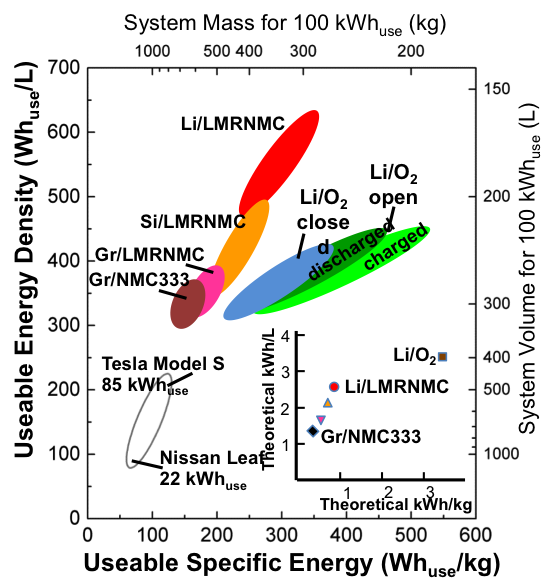
Scientific Achievement
- First comprehensive materials-to-system analysis of performance and manufacturing cost of Li-O2 batteries
- Open (purifying O2 from air) and closed (recycling pure O2 within a pressure vessel) designs analyzed
- Compared against advanced Li-ion and beyond Li-ion designs
Significance and Impact
- Best case Li-O2 systems achieve comparable cost and energy density to other more mature, lower-risk systems
- Lithium metal anode is a high-risk development critical to many high performance systems approaches
- Systems level analysis may contradict trends predicted from conventional “active materials only” analysis
Research Details
- Analysis for electric vehicle (EV) applications: 100 kWh, 80 kWnet and 360V
- Materials – Gr: graphite; Si: advanced silicon composite; NMC333: metal oxide; LMRNMC: advanced metal oxide
- Li-O2 closed system: cylindrical vessel contains high pressure oxygen gas similar to Ni/H2 batteries used in satellites
- Li-O2 open system: ambient air is compressed and purified to ppm levels of H2O and CO2
Work performed at Argonne National Laboratory (JCESR managing partner), Lawrence Berkeley National Laboratory and General Motors. Gallagher et al. “Quantifying the Promise of Lithium‒Air Batteries for Electric Vehicles” Energy & Environmental Science, 2014.

